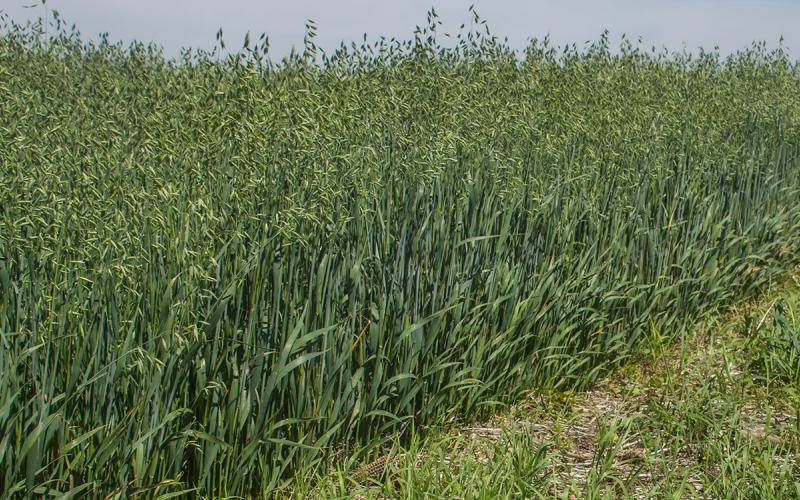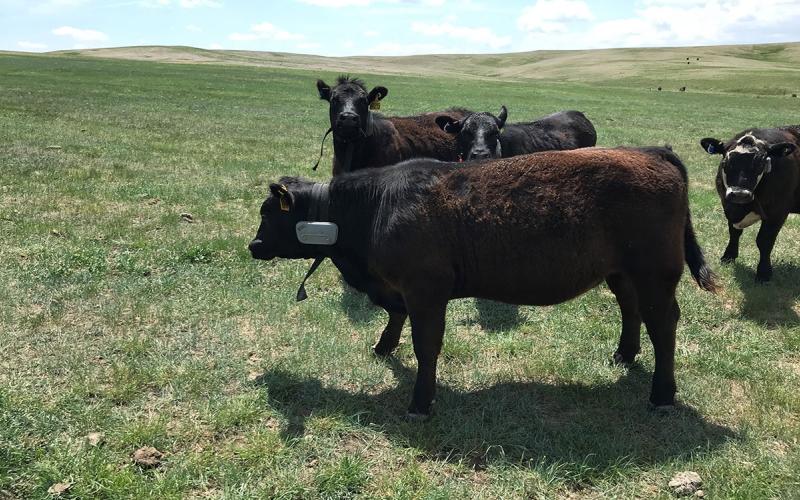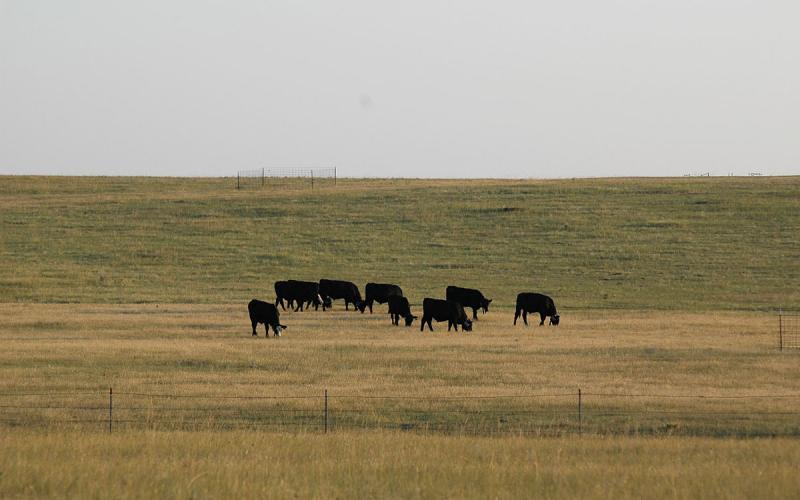Cropland grazing, or ‘integrated crop-livestock systems’ (ICLS), is not a new concept in South Dakota. At its core, cropland grazing occurs whenever livestock graze on cropland acres, allowing the byproducts of one system to become inputs for another. The most common example is crop residue grazing after harvest. But, cropland grazing can also strengthen operational resiliency when paired with precision grazing, interseeding forages, cover crops, and diversified rotations.
The central question for many producers is not what cropland grazing is, but whether now is the right time to initiate the practice in the management of the farm or ranch. It is best understood through an investment lens: the upfront costs are the principal, while the return comes from new revenue streams, reduced reliance on purchased inputs, and improved long-term productivity. Let’s break this down a bit further.
Soil Health and Agricultural Resilience
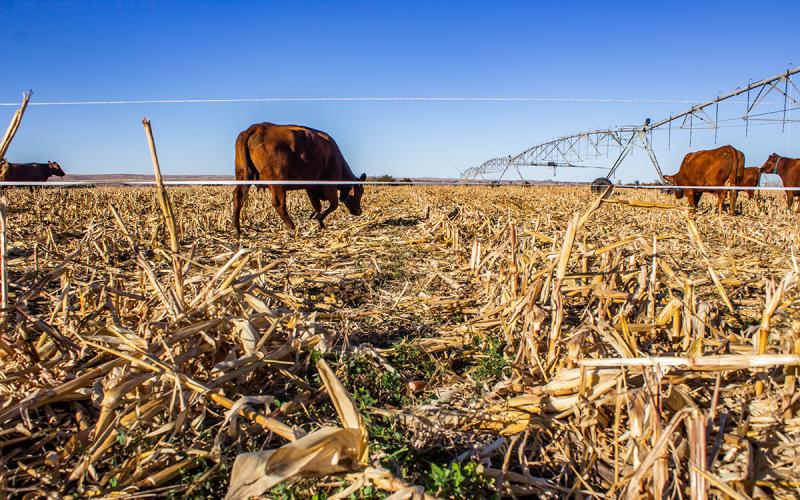
Cropland grazing is more than just an investment; it is a management tool that builds value in the land itself. Livestock integration is one of the five principles of soil health; driving nutrient cycling, water infiltration, and organic matter accumulation. These processes build ‘soil capital’ within cropped acres that typically rely on purchased nutrients to maintain yield goals.
SDSU research found that when conventional corn-soybean rotations were expanded to include small grains, cover crops, and cropland grazing, researchers observed significant increases in soil organic matter, infiltration, and pore space. Such gains represent long-term value in the land, helping producers weather market swings and climate extremes by stabilizing yields and reducing input needs.
Concerns about compaction are valid, but research from USDA-NRCS in South Dakota indicates that grazing on dry or frozen ground does not increase compaction or reduce yields. Instead, the real risk comes during wet periods, making careful timing and stocking adjustments essential for protecting soil health.
Current Use Across South Dakota
SDSU surveys in 2018 and 2021 found that more than half of South Dakota farmers already use cropland grazing within their operations. The top benefits reported were reduced feed costs, improved soil fertility, and increased yields. While challenges such as infrastructure costs, water access, and compaction risk remain, over 75% of respondents reported equal or improved crop yields and overall profitability when integrating cropland grazing into their operations.
Turning Acres Into Income
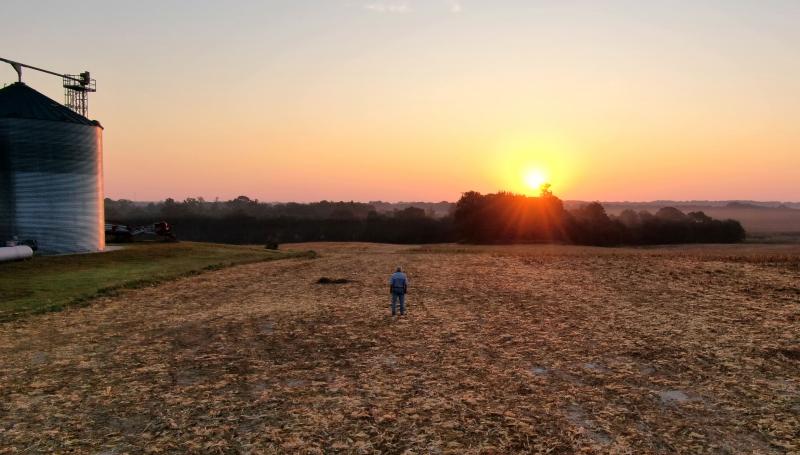
Beyond soil health improvement, cropland grazing allows producers to “do more with less” by capturing value from forage that would otherwise go unused. For livestock producers, this is especially important as South Dakota hay prices increase, with reports above $100/ton at the time of this article.
Forage quantity and quality vary by cropland grazing practice:
- Corn residue grazing often provides 2,000-10,000 lbs./ac of forage, with 3–11% crude protein, but at a diminishing energy return as cattle select higher energy grain and leaf residue before grazing stalks, husk and cob.
- Cool-season annual mixes (brassicas, rye, oats, camelina) yield about 250 lbs./ac per inch of plant height.
- Warm-season annual mixes (sorghum, sudangrass, millet) average 200 lbs./ac per inch.
- Annual forage mixes and cover crops can reach crude protein levels of 10–30%, depending on species and maturity.
Economic studies confirm these opportunities. At SDSU’s Southeast Research Farm, grazing cover crop blends after small grains returned $17.23/ac in the first year and $43.61/ac in the second year, even after accounting for seed, planting, termination, fencing, and water costs. With infrastructure lasting a decade or more, profitability continues to increase each year. Notably, no reductions in crop yields were observed, meaning that soil health gains documented in other studies would further increase the return.
Cropland also carries value as a leased forage resource. Pastureland in South Dakota increased more than 7% in value over the past year, with grazing rental rates generally ranging from $1.50 to $3.50/head/day in some regions, depending on class of livestock and other contract parameters. Cropland grazing lease rates typically begin at $0.50-2.00/head/day for residue and rise with forage quality and quantity. It is recommended to develop grazing leases on a head-per-day basis to protect everyone involved and to prevent over or underutilization of the forage resource. These opportunities provide strong economic incentives at a time when fertilizer and agrochemical prices continue to rise, as livestock grazing suppresses weeds and recycles nutrients to the betterment of future crop years.
The Bottom Line
The evidence is consistent: cropland grazing delivers measurable economic returns, proven soil health benefits, and growing adoption in South Dakota. While infrastructure and management remain challenges, producers have shown that when done right, cropland grazing builds both financial and ecological resilience.
The question is not whether cropland grazing works, but whether now is the time to invest. For many South Dakota farms and ranches, the answer is yes.
Sources
- Dakota Hay Auction. (n.d.). Hay sales results.
- Iowa Beef Center. (n.d.). Grazing corn residue. Iowa State University.
- Magness Livestock Auction. (n.d.). Hay auction results. Magness Livestock.
- North Dakota State University Extension. (n.d.). Utilizing corn residue in beef cattle diets. North Dakota State University.
- Pipestone Livestock Auction Market. (n.d.). Hay & straw market reports.
- Practical Farmers of Iowa. (2018, October). Combining cover crops and livestock.
- South Dakota State University Extension. (2025). Why integrate crops and livestock?. (Publication No. P-00117-2025).
- Tobin, C., Singh, S., Kumar, S., Wang, T., & Sexton, P. (2020). Demonstrating short-term impacts of grazing and cover crops on soil health and economic benefits in an integrated crop-livestock system in South Dakota. Open Journal of Soil Science, 10(3), 109–136.
- U.S. Department of Agriculture, Natural Resources Conservation Service. (2022, October). Cover crop species selection for grazing. (Fact Sheet SD-FS-56).
- U.S. Department of Agriculture, Natural Resources Conservation Service. (2024, November). The value of grazing cropland. (Fact Sheet SD-FS-122).
- Wang, T., & Ristau, T. (2018). South Dakota farmers’ usage of integrated crop and livestock management. South Dakota State University.
